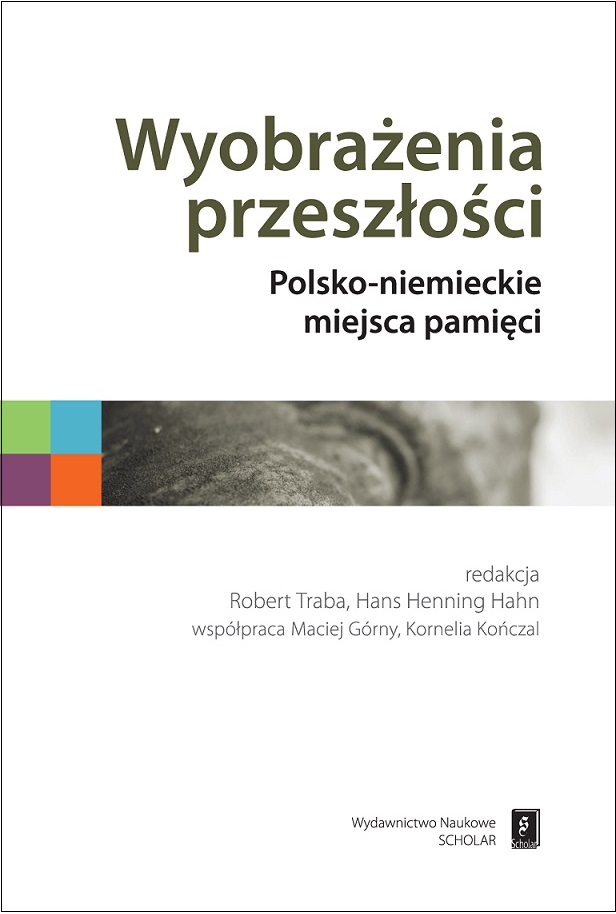
We kindly inform you that, as long as the subject affiliation of our 300.000+ articles is in progress, you might get unsufficient or no results on your third level or second level search. In this case, please broaden your search criteria.

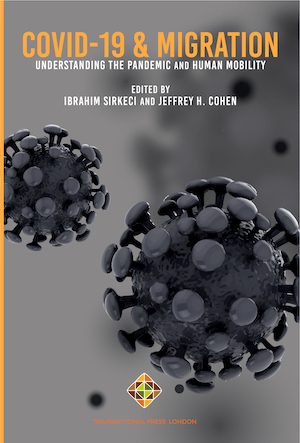
Reactions, measures as well as discourses dealing with the current pandemic vary significantly across the world. While some countries were completely locked down, as was the case in Italy, some had claimed to have very few or no cases, as was the case in Turkey and Indonesia by March 10th, 2020. Nevertheless, the spread of COVID-19 from China has been clearly linked to those travelling from Wuhan in Hubei province in Central China. Therefore, it is important to understand the travel density/volume of passengers carried as well as routes from Wuhan through connected main regional air travel hubs across China. In this study, we developed a model on migration and travel intensity that can explain outbreak and spread of COVID-19 since it appeared at the end of 2019. We show that the presence of migrant stock populations of Chinese origin and the immigrant stock in China are useful indicators in the prediction of the spread of the outbreak worldwide in the event of interaction with several other macro factors. We argue that monitoring immigrant stock data and travel volume data based on human mobility corridors (i.e. origins and destinations), countries could have been better prepared and taken early measures to contain the spread of COVID-19.
More...
Two thirds of the 272 million international migrants in 2019 were employed in the destination country. Demographic and economic inequalities between countries, combined with globalization that reduced barriers to migrants, were expected to continue increasing the number of international migrant workers. Covid-19 closed many national borders to non-essential travelers, with limited exceptions. Seasonal farm workers were one of the notable exceptions, suggesting that many governments do not expect local workers to fill seasonal farm jobs despite record unemployment rates.
More...
It is clear that the novel coronavirus (COVID-19) attacks our biological and socio-economic vulnerabilities. Sharp variations in mortality rates have forced us to acknowledge pre-existing inequalities of class, race and gender in the ability to ‘be safe, be well’ even as a disproportionate amount of the economic pain and suffering of this crisis is being visited upon the poorest and most vulnerable. One unique feature of the COVID-19 response is the need to curb mobility to reduce disease transmission. These curbs on human mobility (notably not matched by curbs on flows of capital) directly impact the vast flows of human migration that the global economy is built upon today. And while the bulk of public attention and policy intervention in most countries has been focused on domestic effects, international migrant workers have long been ‘essential but disposable’ workers of the kind most affected by the health and economic effects of the pandemic.
More...
On January 7, 2020, the Portuguese newspaper, Público, published an article about an unprecedented challenge facing Chinese leaders: a “strange form of pneumonia” (Chaiça, 2020) diagnosed in several patients in the Chinese city of Wuhan, that was subsequently named COVID-19. On March 2, the Portuguese government had placed major hospitals under alert and reinforced the supply of medicines (Campos & Lins, 2020). This occurred even before the declaration of a global pandemic by the World Health Organisation, on March 12 (WHO, 2020), and diagnosis of the first cases in Portugal. On March 18, a national state of emergency was declared - which imposed social measures, such as social isolation and mobility restrictions in public spaces. The state of emergency continued until May 2, when it was replaced by the state of calamity, and then by the state of contingency on July 1.
More...
This is a reflective commentary on the changing nature of Border Management in Uganda amidst the COVID-19 crisis. The COVID-19 pandemic is the largest health and mobility crisis that our world has ever seen. Following travel restrictions and lock-downs, several countries are gradually opening their air spaces; however, border Governance will never be the same. To restore confidence in global travel, countries will have to rethink their Border Governance regimes, structures, protocols and procedures to accommodate health safety COVID-19 guidelines
More...
Finland is a Northern European country, bordering with Norway, Sweden and Russia. The total population is 5,5 million. Up until the 1990s, Finland has been mainly a country of emigration. Since then, however, the size of the migrant origin population grew from half per cent to approximately eight per cent in 2019 (OSF 2020a). The largest migrant origin groups residing in Finland are from Russia and the former Soviet Union, Estonia, Sweden, Iraq and Somalia. Migration has concentrated particularly towards the Helsinki metropolitan area, with half of the migrant population residing in this region (OSF 2020b). The main reasons for migration to Finland are family reunification, employment and studies, with a substantially lower proportion of persons arriving as resettlement refugees or asylum seekers (Ministry of the Interior 2019).
More...
According to the World Bank, remittances around the world will fall about 20% as a result of the economic crisis created by the COVID-19 pandemic and associated lockdowns. The projected drop, which will be the sharpest fall in recent history, is largely due to the collapse of migrant workers’ wages and employment—workers who are often more vulnerable to the loss of jobs and wages during economic crises in the countries that host them. In light of these predictions, remittances will fall 19.7%, dropping to US$445 billion dollars compared to US$554 billion dollars the previous year. The World Bank predicts that the biggest drops will be in Europe and Central Asia (27.5%), followed by Sub-Saharan Africa (23.1%), South Asia (22.1%), the Middle East and North Africa (19.6%), Latin America and the Caribbean (19.3%) and East Asia and the Pacific (13%). Even when taking this trend into account, the institution considers that remittances will continue to be a very important source of financing for recipient countries compared to direct foreign investment, which it estimates will fall by more than 35% in 2020. This maintains the trend seen in recent years of larger amounts of remittances than direct foreign investment (World Bank, 2020).
More...
The worldwide spread of COVID-19 first reported from Wuhan in China is attributed to migration and mobility of people. This paper presents how our understanding of migration and livelihood could be helpful in designing a mitigating strategy of economic and social impact of COVID-19 in India. The paper concludes that there are many challenges migrants face during the spread of COVID-19 resulting from nation-wide lockdown. Many internal migrants faced problems such as lack of food, basic amenities, lack of health care, economic stress, lack of transportation facilities to return to their native places and lack of psychological support. On the other hand, COVID-19 has also brought into sharp focus the emigrants from India and the major migration corridors India shares with the world as well. Although state and central governments have adopted various strategies to deal with these issues, there is a huge uncertainty about how long this crisis will last and what damage it would do to the economy and livelihood of people. This paper further provides some immediate measures and long term strategies to be adopted by the government such as improving public distribution system, strengthening public health system, integration of migrants with development, decentralisation as a strategy to provide health services, and providing support to return migrants to reintegrate them, and alsostrengthen the database on migration and migrant households.
More...
The COVID-19 pandemic has profoundly challenged long-held assumptions about the inevitability of globalization. Despite efforts by the World Health Organization (WHO) to hew to a multilateral, coordinated and rational pandemic response, countries around the globe have responded to the emergence of the novel coronavirus (SARS-CoV-2) by reflexively closing borders and curtailing mobility. At the same time, stigma, xenophobia and discrimination have surged. As we look back at the first turbulent months of the pandemic, two competing impulses are evident: a tendency to blame, exclude and foment nationalist instincts; and a more reasoned, inclusive response that addresses the needs of marginalized populations, while acknowledging that we are all interconnected in illness and health. We are at an inflection point in the COVID-19 pandemic; whichever one of these impulses is allowed to prevail, it will dramatically shape the public policy agenda, the experiences of refugees and displaced populations worldwide, and the health and wellbeing of our society.
More...
The last decade has seen considerable growth in multilateral approaches to human mobility. A host of partnerships among international organizations have come into existence on human mobility, a term that refers to the broad spectrum of movements associated with migration and displacement. Since the landmark first High-level Dialogue on International Migration and Development, held at the United Nations General Assembly in 2006, collaborations between multilateral organizations have increased continuously, both in terms of quantity and quality. The COVID-19 pandemic, with its global and wide-reaching impacts on virtually all aspects of life, has affected these modes of cooperation and will continue to do so in the future. To understand future scenarios of interagency cooperation on human mobility, this chapter outlines the structural determinants influencing such partnerships. This includes structures put in place before the beginning of the pandemic, lessons from the immediate response to COVID-19, and a projection of how future features may impact cooperation in the times ahead.
More...
According to the United Nations (2020), migrants are currently being affected by three overlapping crises due to COVID-19; a health crisis, a socio-economic crisis and a protection crisis. I will focus here mainly on the socio-economic crisis. Financial or monetary remittances, loosely defined as the money that migrants send back to friends and family members in their countries of origin, are an extremely important lifeline for those that receive them. In 2019, remittances reached a record high of an estimated $714 billion, with an estimated $554 billion going to low and middle income countries (World Bank - KNOMAD, 2020b, p. 30). Unfortunately, it looks like remittances are being heavily impacted by COVID-19. The World Bank (2020b) currently estimates a 20 per cent global reduction in remittances for 2020 with continued shortfalls through 2021.
More...
This study focuses on the coping and experiences of Ethiopian-Israeli women during their studies for advanced degrees, and describes the elements of success and the unique barriers that they face. The literature review presents the intersecting identity approach, which was formed by American scholars and was adapted to the Israeli case. We emphasize the challenges of the gender-race combination, assuming that these two identity factors cannot be disconnected here and that their combination creates unique challenges. Various emotional, cognitive, mental, social, economic and cultural aspects of the Ethiopian immigration to Israel and their significance, separately and combined, are considered as the background of the women’s intersecting identity. The research method was qualitative, and included ten semi-open interviews with women who had PhDs or were in various stages of acquiring advanced degrees. Our findings indicate that barriers that are unique to women who cope with an intersecting identity can be identified and defined. The barriers are varied – from lack of information about the requirements of the Israeli academic system, to coping with emotional and conflictual overload due to their desire to study and their inability to support their family of origin whether financially or emotionally, to an absence of instrumental resources to fund their studies. Coping with their intersecting identity vis-à-vis the academic system was characterized by mental resilience thanks to their personality characteristics, self-confidence, curiosity, and aspiration to develop and succeed together with their considerable ability to adapt to the various demands presented to them and to excel in their achievements. The conclusions of the study focus on the changes that happened in their life: the awareness to promote the representation of Ethiopian-Israeli women in academia, and to create a supportive environment on the personal and academic level. These women can serve as role-models and Mentors for other women in the Ethiopian-Israeli community and for women from other minority groups, and facilitate a pluralistic, multicultural academic system. Additionally, the structural and social barriers should be removed through promoting awareness and policies of equality and fair distribution of public resources.
More...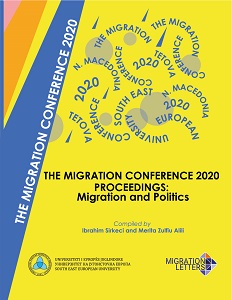
Over the years there have been presentations of many research-works on the so-called “migration and development nexus” with several schools of thought contributing significantly towards the concept as far as the theoretical framework is concerned. In particular, the New Economic Labour of Migration (NELM) stresses on the impact of financial remittances (an aspect of migration) and how it serves as an insurance for most family members. Significantly, there have been several statistical data from the World Bank which highlight on the role of remittance and how it could be a poverty alleviation tool. Whilst these assumptions and theoretical underpinnings seem to argue in favour of how migration could be a contributor to development and poverty reduction, evidence from the grounds seem to suggest quite a worrying situation. Indeed, we cannot discuss development robustly without shedding light on inequality. Thus, the inequality gap between the rich and poor as well as the monumental regional development gap keep widening as the beneficiary of remittances are normally those within the middle and upper class and the places where these live. With reference to Ghana as a case study, the prime focus of this paper discusses how migrants’ remittance is contributing towards inequality in Ghana. To address this issue, this paper is structured into two main parts. The first part discusses statistical data on remittances to Ghana with a review on the theoretical framework on the consequences of migration. The second part delve into the issue of inequality and the role of remittances, discussing options for a better future, with higher levels of social justice.
More...
İnsanı, diğer varlıkların üzerinde istisnai bir özne olarak gören Hümanist bakışa tepki olarak doğan posthümanist düşünce, insanın varoluşsal kimliğini sorgular. Edebiyat, sosyoloji, felsefe, siyaset bilimi ve medya çalışmaları gibi birçok disiplinle ilintili olan Posthümanizm, insana dair yeni bir anlayış getirir: insan artık Hümanizm’in parolası olan ‘bütün şeylerin ölçüsü’1 ve efendisi değil, evrenin sıradan ve mütevazı bir üyesidir. Hümanizmanın sorgulanması Friedrich Nietzsche ve Max Stirner gibi felsefecilerle 19. yüzyıla kadar götürülebilir; ancak toplumsal karşılığını bulması, İkinci Dünya Savaşı’ndan sonra özellikle de altmışlı yıllarda, feminizm ve ırkçılık karşıtlığı gibi hareketlerle birlikte postmodernitenin kendini göstermesiyle gerçekleşir. “Bu hareketler Batı demokrasisi, liberal bireycilik ve herkes için sağlandığı iddia edilen özgürlüğe dayalı Soğuk Savaş belagatinin yavanlığına meydan okumuştu” (Braidotti 27). Bunundevamında seksenli yıllardan itibaren ortaya çıkan Hümanizma karşıtı fikirler bileşkesi olan Posthümanizm, insanların Rönesans’tan beri etik anlayışların tek yapıcısı, temsilcisi ve uygulayıcısı olduğu kavramına karşı çıkar. “Aslında Posthümanistler, teknoloji yönelimli geleceğimizde dünyayı ahlaki bir hiyerarşi olarak anlamanın ve insanı da bunun tepesine yerleştirmenin artık bir anlamı olmadığını iddia ederler” (ethics).
More...
Rönesans ve sonrasında Batı düşüncesinde etkin bir felsefi söylem olarak kendine yer edinen Hümanizm, Orta Çağ Hristiyanlığının “Tanrı merkezli bir varlık ve toplum tasavvuru” (Evkuran 39) olan teosentrik dünya görüşünün reddedildiği ve odağını Tanrı’dan insana kaydıran “homosentrik paradigmayı”1(Best ve Keller 180) ifade etmektedir. Nicola Abbagnon’un tanımlamasıyla “hümanizm insanın değerini kabul eden; onu her şeyin ölçütü olarak tanımlayan, insanın doğasını, yetilerinin ölçüsünü (sınırlarını) ya da ilgilerini konu edinen bir felsefedir” (763). Aydınlanma ve Modernite ile birlikte düşünsel zirvesine ulaşan hümanizm, insanları Tanrı’nın vesayetinden kurtararak, seküler değerlerin benimsenmesini, teknolojik egemenliği ve bilimsel akılcılığı teşvik eder. “Batı medeniyetinin seküler ve rasyonel doğrularını bariz bir şekilde yansıtan” (Davies 9) hümanizm, insan-dışı yaşam biçimlerinde olmadığını iddia ettiği temel bir insan özünde ısrar eder. Dolayısıyla, hümanizm ve ona eşlik eden kapitalist düzen Ben / Öteki, Erkek / Kadın, Doğal / Yapay, İnsan / İnsan Olmayan vb. ikili karşıtlar yaratır. Egemen aklın öznesine dayanan bu karşıtlıklar posthümanist söylemde eleştirilmektedir. Çeşitli anlam kalıplarına açık, “birden fazla ve birbiri içine geçmiş” (Ağın 1) anlamlara sahip bir kavram olan posthümanizm, hümanist söylemin iddialarını kabullenmeyi reddederek, hümanizmin hegemonyasına meydan okumayı ve onu dönüştürmeyi amaçlayan bir dizi eleştirel söylemler bütünüdür. Gülnur Güvenç’e göre “posthümanizm, hümanizmin neden olduğu bunalımları açıklayan, düzenleyen veya bunlarla başa çıkmaya yönelik fikirler içeren bir şemsiye terim olarak kabul edilir” (49). İkili karşıtlıkları aşma yönünde, insanı fiziksel ve ontolojik olarak değişime uğratan gelişmiş teknoloji kültürüne posthümanizm de özel bir önem atfetmektedir. Posthümanizmin doğayı ve ekolojiyi de kapsayan tekno-bilimsel felsefesi, artık saf olmayan ve teknolojiyle dönüştürülmüş özneler üzerinde durmaktadır. Andy Miah’ın da belirttiği gibi, “teknolojik değişim posthümanizmin çağdaş temsillerinin bir merkezi haline gelmiştir” (271). Bu atfedilen tekno-kültürde organik ve doğal olmayan “insan/makine, hayvan/organizma/insan, fiziksel/fiziksel-olmayan melez” dönüşümler gibi “posthuman’daki ‘post’ ön eki insanın sınırlarını aşan hem ‘sonra’ hem de ‘öte’ anlamını işaret eder” (Buran 126). Bu bağlamda posthümanizm insanın tarihsel bir eleştirisinden yola çıkarak hümanizm sonrası döneme önceliğini verir ve teknolojinin dönüştürücü etkisini de göz önünde bulundurur (Yeşilyurt 9). Anti-hümanist, feminist ve postmodern düşünürlerin fikirleri ekseninde gelişen posthümanizmin özünde yatan niyet, hümanizmin insanlığa dayattığı totaliter büyük anlatıları parçalayarak, onları çeşitlilik ve akışkanlık fikirleriyle değiştirmektir. Bu özellikleriyle posthümanizm klasik hümanist kavramların eleştirisini yapan, yüksek teknoloji kültürünün dönüştürücügücüne vurgu yapan postmodern bir düşünce olarak da kabul edilebilir.
More...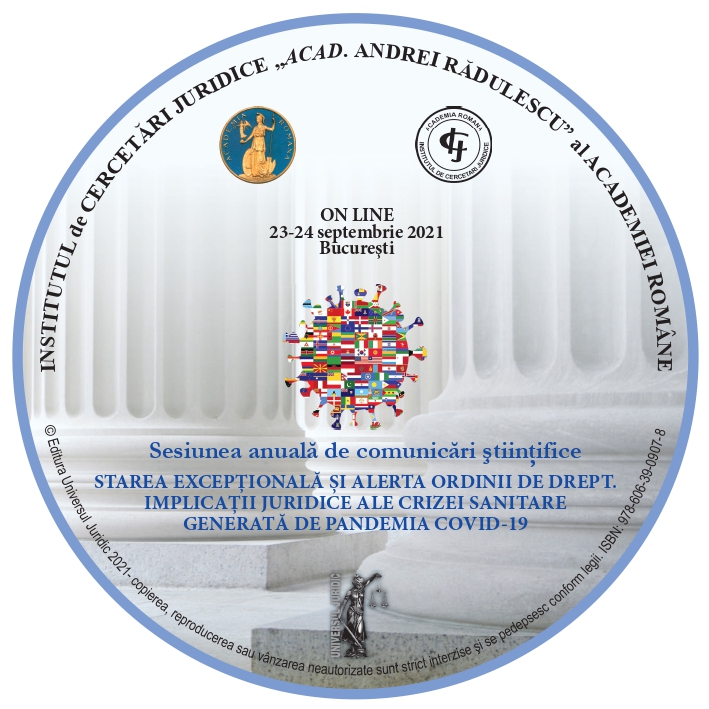
The pandemic generated by the new Coronavirus caused a rapid change in the way of approaching the legal issues and the adaptation to a legislative framework that tried to regulate the new factual situation. A number of notions and legal institutions have acquired a special importance, being necessary their reinterpretation in the context of COVID-19, in order to identify solutions that correspond to these situations that humanity has been facing and, at the same time, have brought to the light systemic deficiencies which until then had not been considered sufficiently relevant or which had been amplified to an incredible extent. Force majeure, state of emergency, military commands, public interest, public health are just some of the notions that got a major role overnight. Emergency medical assistance and dental care, the rights of patients with chronic diseases, the fair balance between restricting the exercise of individual rights and public safety have led to a relaunch of medical law - a branch of law which, until recently, has been in a shadow cone, poorly represented from a doctrinaire point of view. Also, the sudden emergence of an unprecedented new global situation has been a challenge for public administration authorities, both at central and local level, and, in the same time, a necessity to manage it effectively and make appropriate decisions. The objective of this study is to present a retrospective analysis of the most important situations of this kind, from a juridical perspective and the underlining of the found deficiencies.
More...
Reflections on the Legality of Some Normative Administrative Acts Issued by the Minister of Health During the State of Alert Determined by the COVID-19 Pandemic in the Execution of Law No. 136/2020 on the Establishment of Measures in the Field of Public Health in Situations of Epidemiological and Biological Risk. In the situations of epidemiological and biological risk provided in Law no. 136/2020, if there is an imminent risk, the Minister of Health establishes by order - administrative act of a normative nature - the manner of application of the measures provided in the mentioned law. Thus, the measure of isolation in a health unit established by decision of the public health directorate will be based on the order of the Minister of Health issued for the concrete execution of the law. However, the judicial control of the normative administrative acts is exercised by the administrative contentious court only within the action for annulment, under the conditions provided by Law no. 554/2004, so that ministerial orders cannot be the subject of the objection of illegality. Therefore, persons in respect of whom the measure of isolation in a health facility has been instituted, although they can ask the court to annul the decision issued by the public health directorate, they will not be able to invoke a possible illegality of the order issued by the minister of health, the latter not being able to be the object of the exception of illegality. This is why it is essential that ministerial orders be issued in the letter and spirit of the laws adopted by Parliament. In order to illustrate the (un)lawfulness of normative administrative acts issued by the Minister of Health during the alert period, in this short study we will analyse the orders that imposed the social medical detention of persons infected with the SARS-CoV-2 virus after the entry into force of the Law on the establishment of measures in the field of public health in situations of epidemiological and biological risk.
More...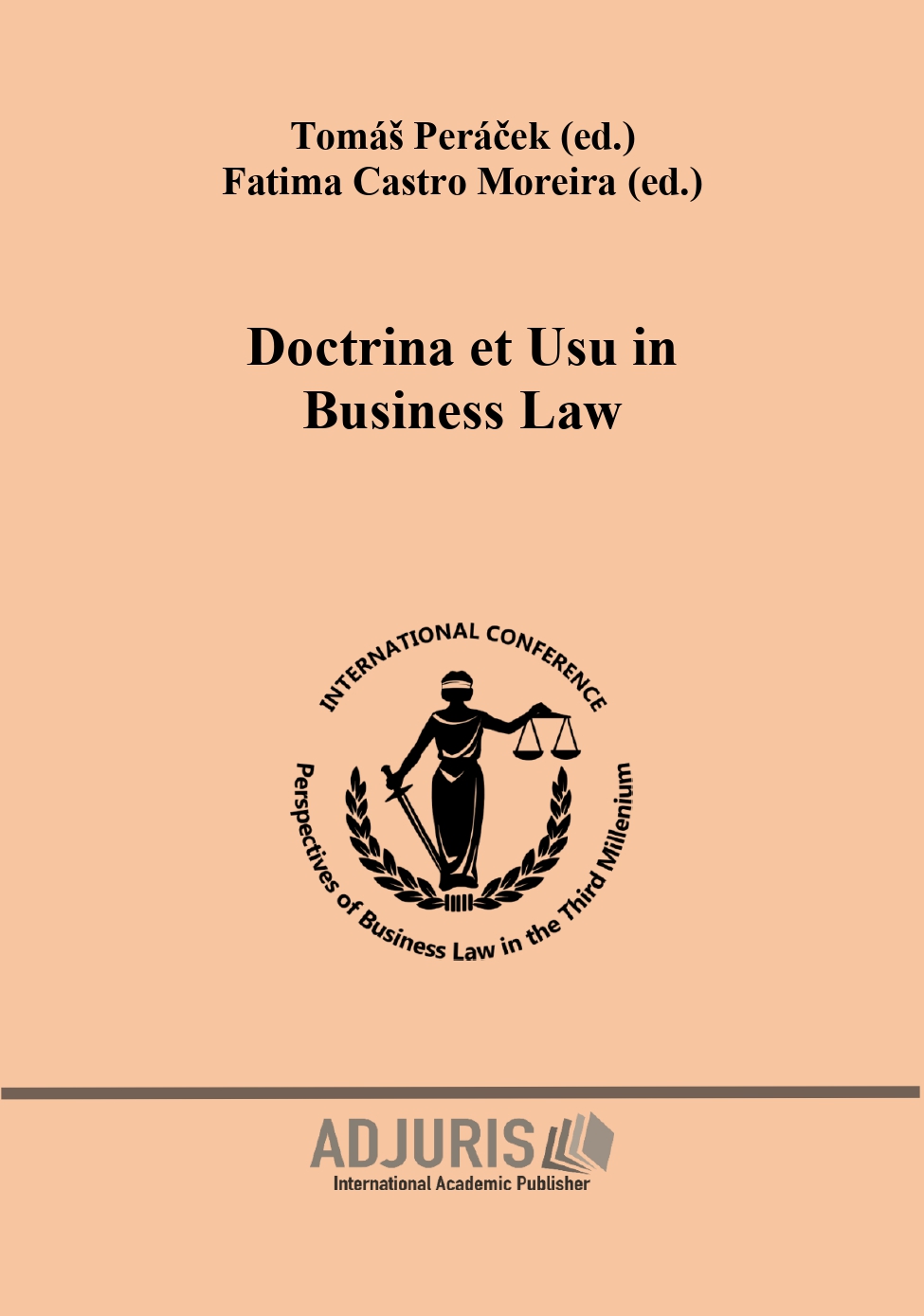
The work aims to offer an objective, even critical analysis of Law no. 151 of 20152 regarding the insolvency of natural persons. This regulation, entered into force on 01.01.2018, ̋celebrates ̋ 5 years of application, which is why I approached this topic with the intention of a general analysis of the provisions of the Insolvency Law of natural persons and to offer my own conclusions regarding this topic. I will analyze, in the first part of the paper, the general provision regarding the notion of insolvency, the conditions imposed by law for the initiation of this procedure, as well as the options that Law no.151/2015 makes available to the insolvent debtor depending on his legal situation. In the second part of the paper, I will analyze a series of debatable aspects that the law refers to, and I will assess the usefulness and opportunity of their regulation. The conclusions will try to offer some legislative proposals that will make this law more well-known and approachable for natural debtors in a state of insolvency. Carrying out the scientific approach, I will use different methods of interpretation, starting from the grammatical one and reaching the method of quantitative and comparative analysis.
More...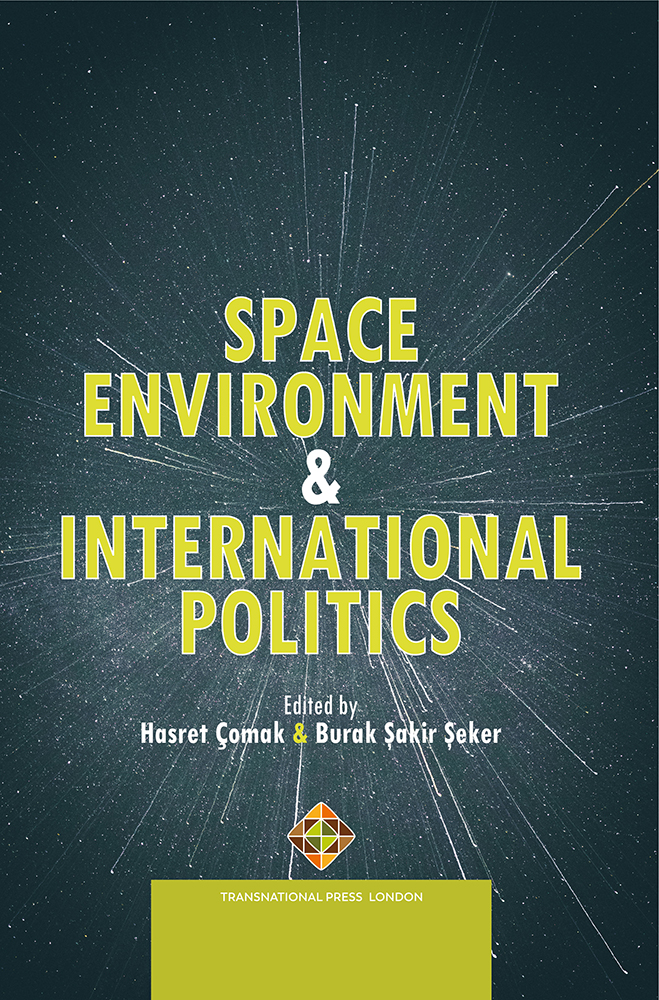
When the space age started during the Cold War, two sides of the Cold War have dominated the space actions for a long time. Space has of course been considered as a means to advance security and decrease security of the adversary regarding the atmosphere of the Cold War. That’s why for a long-time space security have been defined as a state’s ability to place assets to space without being interfered. But today there is much more complex situation in the space when we consider that states, international organizations and even individuals are doing space experiments and launching many objects to space which makes the space more crowded. That’s why today we are in need of wider approaches rather than only military based ones in order to explain the complicated situation of space.
More...